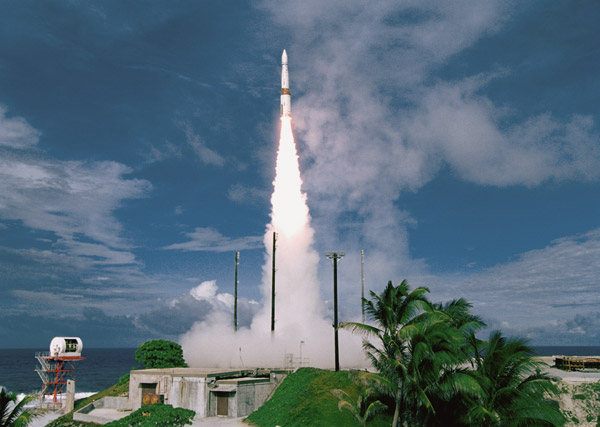 |
Expediency or Effectiveness? |
 |
 |
Expediency or Effectiveness? |
 |
|
Land-based missile defense is an ambiguous package to High Frontier. On the positive side, the components of a land-based missile defense plan are already in integrated testing, the system has strong support from the President and the BMDO, and the proposed test site at Fort Greeley, Alaska, can be operational as an emergency limited missile shield within a very short number of years. However, land-based missile defense is also the most expensive, least effective, and least useful of the proposed system architectures. The per-shot cost of firing a missile at a missile is extremely high, intercept during late post-bus-separation midcourse phase and terminal phase is more difficult and less reliable than the boost-phase intercept capability offered by space-based and possible sea based systems, and a land-based system shields only the area in which it is deployed- meaning that in order for the United States to protect itself, its overseas troops, and its allies as well as it should land-based interceptors would have to be deployed across the world. For these reasons High Frontier is reluctant to support the land-based "National Missile Defense" system architecture embraced by the past administration and impart inherited by the current one. But, there is hope. The BMDO's obsessive fixation with the land-based system architecture has recently been revealed to be the result of strict compliance to the defunct 1972 ABM Treaty. This was forced by our last administration that was both unwilling to move forward out of the old Cold War mindset and determined to leave our county defenseless against ballistic missiles. With the change in government a fresh wind has swept across the BMDO. At a Senate Armed Services committee hearing in July of 2001, Assistant Secretary of Defense Paul Wolfowitz and Director of the BMDO General Ronald Kadish stated that the BMDO was now free to pursue the most effective means of defending our country, troops, and allies from ballistic missiles opening the door to the more effective and useful system architectures thought out ten years ago by SDIO. While land-based missile defense does have
its role to play in a layered missile defense system as terminal/point
defense- and is essential against cruise missiles, depressed trajectory
Submarine Launched Ballistic Missiles, and as a mobile system to accompany
deployed troops such as PAC-3 and THAAD- the rejection of the false promises
of the ABM Treaty by the current administration will allow attention to
be refocused to the more effective and more affordable sea and space based
systems already well developed in years past.
|
Below is a description and
explanation of land-based missile defense's system components as well as
commentary by High Frontier, links to related Strategic Issues Policy Briefs,
and other information on the debate over land-based missile defense.
1. Fundamentals of Land-based Missile Defense |